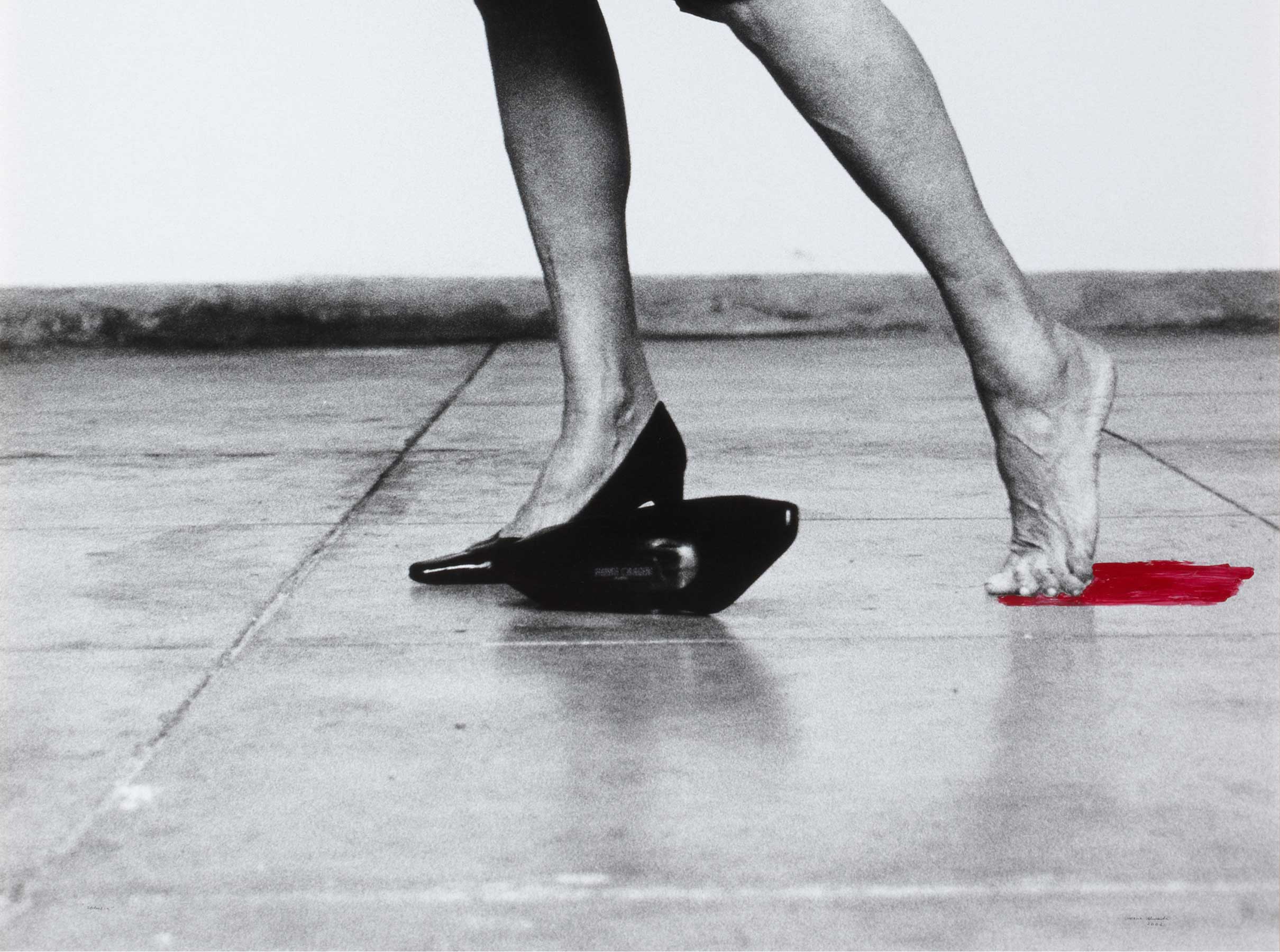Miriam Cahn embarked on her artistic career in the 1970s with a series of black and white drawings that affirm her approach to drawing as a work in itself and not as a sketch for oil painting. Drawing provides an immediacy that other mediums do not; it is simple, direct and, in her case, that speed of execution turns the act of drawing into a performance, with a strong physical content. Indeed, her characteristic way of drawing on the floor, squatting, even with her eyes closed, affords her a freedom that would be difficult to achieve painting on canvas.
Her works in the Banco de España Collection are typical of her themes and means of expression, marked by the conflicts of the 1990s in the former Yugoslavia and by the terror triggered after other wars in the Middle East and Syria. The three drawings are part of this theme, and are based on images of violence and the contemporary exoduses that the different media report daily. Women and children fleeing, scared silhouettes, turning to look at what they are leaving for the last time; haunted figures that look at us with the horror of the unknown and the stupor of what they are leaving behind. Images in black and white, surrounded by nothingness or enveloped in colours that create an overwhelming space. The works have general titles, written in lower case, such as an der grenze, meaning ‘at the frontier’ – at any frontier – or are untitled, eliminating the anecdotes and extending the drama to any part of the contemporary world.
Thus, Miriam Cahn’s work is undeniably akin to the work of Francisco de Goya, who was one of the first to denounce the brutality of war and its impact on the most vulnerable through his art.
Other works by Miriam Cahn

